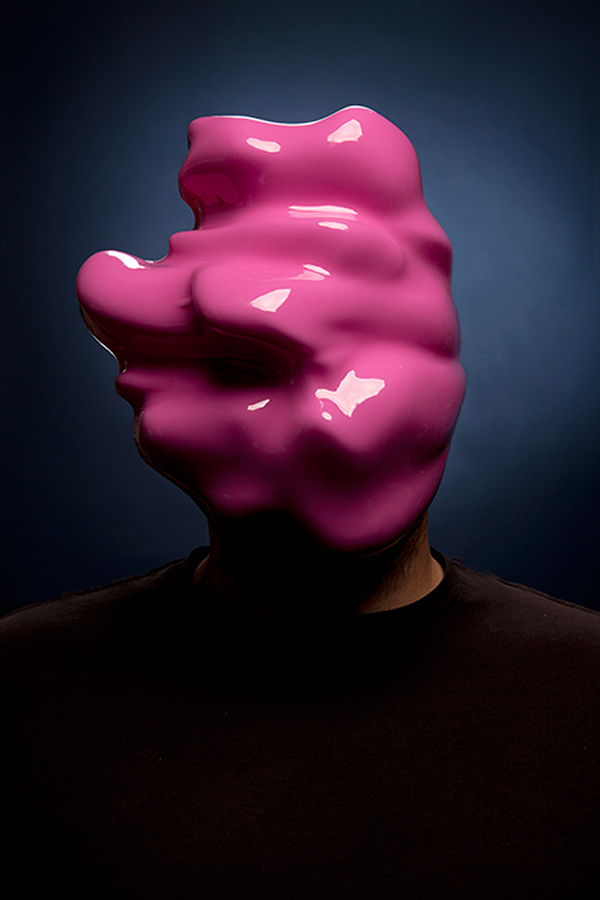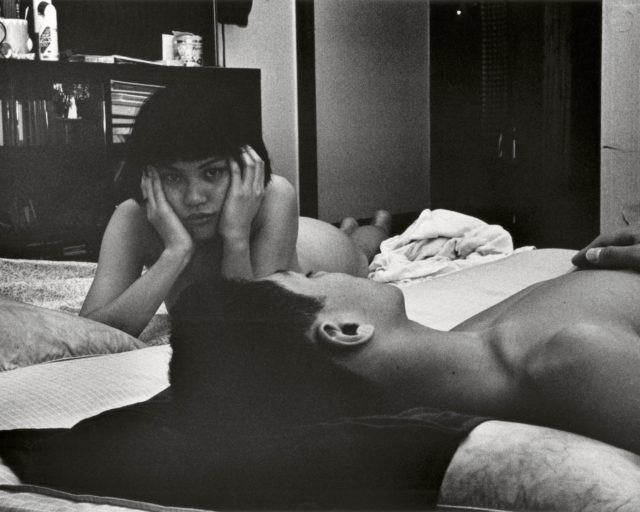What's In An Image?
What's In An Image?

Shelly Silver, What I’m Looking For, 2004
© the artist
In the fall of 2016, two American pop cultural icons became unwitting touchstones in the discourse surrounding the contemporary relevance of data. Naturally, I’m speaking of Kim Kardashian and Donald Trump, both reality-TV celebrities and entrepreneurs. Kardashian was the victim of a horrific gunpoint robbery in her Paris hotel room, only to be brutally victim-blamed in the media for her constant sharing of selfies containing metadata that might lead criminals to her whereabouts. Trump arguably stole the US presidential election by not only bucking the odds—as they had been laid out in predictive national-poll results leading up to Election Day—but also by carrying out essentially civilian psy-ops through contracts with big data firms like Palantir and Cambridge Analytica, whose official tagline is “Uses data to change audience behavior,” and who were also behind the recent buyer’s remorse–laden Brexit vote. While Kardashian’s photosharing practices—a staple of her brand—came under heavy scrutiny, Trump’s big-data battle was armed by info. The firms gleaned from millions of social-media users’ online posts, from photos to text posts to likes.
In fact, today we are seeing a simultaneous and paradoxical blurring of the boundaries between photographs and their associated (formerly meta-)data, and between a media user/consumer’s clinging to a right to privacy versus a tendency to rampantly overshare. This blurring—whether in the name of branding, neoliberal critique, perceived activism, social/familial bonding, or a desire to be validated, i.e., “seen” (given the Pew Trust’s designation of the Millennial generation as that of “Look at Me”)—somehow persists in aligning recognition with the scopic apparatus.

Natalie Bookchin, My Meds, from the Testament series, 2009
© the artist
Make no mistake: The fact that I describe these simultaneous developments (one social, one formal/technological) briefly and in the same breath should not discount the fact that they are both epic in their ramifications and wholly different, even if their coincidence is worth exploring. After all, as artist and writer Trevor Paglen said in a “1,000 Words” feature in Artforum, the intervention of AI and algorithms into photography over the last decade has displaced the human eye in the act of seeing, and has become, in his estimation, “more significant than the invention of photography” itself.
When I think of a photograph today, I think of the actual image floating askew, like some intergalactic curtain, aimless over the liminal threshold between public and private. A steganographic decoy, the site of cathexisquadata for the photographer’s or poster’s (who’s who again?) attendant fears and fantasies, mirror images of twin drives etched into the photo like a watermark in invisible ink.
We began to hear horror stories about this right after 9/11. Terrorists swapping JPEGs that were literal fronts for the cryptic messages buried inside the files. Meanwhile, the “if you see something, say something” administration was erecting a theater of security in which airport lines, public transportation, teenage bedrooms, online profiles, and selfie phones were all players in the newfangled Globe Theatre. Soon millennials and Gen Z social-media users were born, many after 9/11 or too young to remember a time before such visibly increased state surveillance in the name of “homeland security,” for whom a “photo” was almost exclusively a digital object. This is the era in which reality-TV shows like Big Brotherare no longer shocking outliers, but as my colleague Gene McHugh once said succinctly of postinternet art, the medium has shifted from novelty to everyday banality.

Joseph Maida, from his reflection “Pictures without Words” in Public, Private, Secret: On Photography and the Configuration of Self, 2018
© the artist
I would argue that we’re in an era of photography marked by data ennui. Consider a morning in the life of my own media consumption: Yesterday I checked my email only to find a shockingly prescient promotional message with the subject line, “Is being online fun anymore?” Then I read an article about Roomba vacuum cleaners autonomously collecting data about their owners’ home layouts and lifestyle. After this, I came across a well-received tweet by someone proposing that blood-alcohol levels and their GPS coordinates be collected on people’s social-media posts. Finally, I read Paglen’s article, which points out the politically repressive implications of machines attempting to “recognize” photographic subjects (their race, gender, and age, for instance) according to normative criteria. Somewhere in these scattered scenes, the concept of consent melts away in the hazy playtime of convenience and fooling around online.
Earlier this year, a study out of the Max Planck Institute quantified this data ennui in regard to the privacy risks that users take in posting photos, which are often at odds with their own stated privacy preferences or policies. They were able to identify sixty-eight categories of risk (far more than I think many of us typically realize—part of the point) in the form of information that machines are able to glean in photos. This includes details like recognizable geographic features in the background, a wedding ring suggesting relationship status, objects in the image that might indicate medical history, a child’s hand holding an object that might indicate parental status, and many more elements to which people might not give a second thought. The study’s authors were advocating for what they called a “Visual Privacy Advisor,”distinct from general, categoric text descriptors that could algorithmically recognize and warn users that images posed privacy risks. The machines could see better than humans or could be trained to care more.

Zach Blas, Fag Face Mask, October 2012, from the series Facial Weaponization Suite
©the artist
October 20, 2012 , Los Angeles, CA
Negotiating participation in image culture in an era of constant state surveillance and self-broadcasting is not easy. For the last fifteen years, there’s been increasing pressure to participate in both arenas, to some extent. One is compelled to submit to surveillance “for the greater good,” if not to participate in various layers of sousveillance—sous being the French counterpart to sur, a looking from below rather than above. Citizens’ countersurveillance has thus only amped up in the six decades since the phrase “the whole world is watching” has been in circulation, following the rapid proliferation of cameras under the doctrine of media convergence.
It’s not just the word photo that is up for redefinition today. There is a casual slippage between many of the terms we previously used to ground ourselves—in the art world, the sphere of computing, and in digital culture writ large. For instance, I’ve written previously about how one of the primary symptoms of network culture, in the post-internet era, is a slippage between the definition of transparency-as-visible in surveillance contexts to transparency-as-invisible in computing parlance. We also tend to conflate participatory art and participatory media, assuming equal levels of informed consent on the part of participants.
And that is the ultimate question raised above: to what extent are people informed participants in the sphere of photography today, and subsequently, in the world of image-embedded data? The participation question might be the easier half to address: there is a tug of war between a desire to expose and a desire to be protected. But to be informed feels nigh on impossible in the undertow of the theoretical singularity invoked by rapidly advanced encryption, AI, and surveillance technologies and their deployment.

Joseph Maida, from his reflection “Pictures without Words” in Public, Private, Secret: On Photography and the Configuration of Self, 2018
© the artist
Regardless of the everydayness or banality of the photos at stake (or perhaps because of this uncannyness), the more one thinks about it, the more one feels like the subject of a Hollywood virtual-reality production. The piece of paper, the screen, the pixel, the contact lens, or the neural implant stands in for the representation that is perceived to be not-there/previously-there/ there-not-there—whether it is ultra-high-resolution or the kind of “lossy-copy” Hito Steryl has called the “poor image” (a digital artifact accelerating toward a thing of the past; an accidental fallacy). No matter how generous one is in theorizing the materiality of conceptual or digital or performative or time-based or otherwise “ephemeral” media, we have to remember that it is not only image quality that distinguishes digital from analog; it is data, the code itself. The digital is always already a medium of doubles, if not duplicity—not necessarily because it is simple to forge, as we easily assume when we swap the term “Photoshop” for “digital,” or forget how long predigital cinema carried out special effects—but because alphanumeric code is one language now capable of telling a story altogether different or adjacent to the images that overlay it.
Those of us interested in photography and new media have spent much of the last fifteen years theorizing and aestheticizing digital archives, but we would be remiss not to recognize that individual photos are now archives. That is, not just indices of their immediate metonymic namesake (the light that winked them into being, or the space/time event to which the photo bears an immediate, proximate, and consummate relationship) but also carriers (carrions) of whole libraries of information. Consider this in context of a society with ubiquitous image-making devices, where taking and sharing images is de rigueur. People are walking around with databases of databases of databases, ready to post them to public databases that will be hosted on other civic or corporate databases, for analysis by other unforeseen data firms, with unknown aims. The disparity of access to public and private information, the corporate colonization of the net that seeks to monopolize the space, and the looming legislative threats to net neutrality that hover over the landscape of cloud computing only compound this vista. Suddenly the once-novel concept of “database aesthetics” sounds not only trite but Pollyanna.
Artists and other supporters of the photographic arts (by which I mean good old-fashioned point-and-shoot, then print-on-paper photography) who are, at this point, still reading might feel that their practice has been sidestepped in this essay. On the contrary: One of the reasons I so related to the email that asked, “Is being online fun anymore?” is that I once made internet art, cofounded a “pro-surfer” net art community, and curated new-media art at a time when the internet felt like a more utopian, adventurous, less litigious, more neutral place in which the art we were all making had neither become co-opted by corporate channels nor was up for comparison (by us or anyone else) with social media. Likewise, I do not mean to cast “fine art” photography as a fledgling outlier kicked to the curb by the evil internet. In fact, I would invoke the French dramatist Antonin Artaud in arguing that in this era of questionable “truthiness” and threatened arts funding, the nation is in greater need than ever of the arts, if not art therapy.

Ann Hirsch, Here For You (Or My Brief Love Affair with Frank Maresca), 2010
© the artist
Few people realize that it was Artaud who coined the term “virtual reality” in 1933, when articulating the concept of the theater and its double in his initial manifesto on the Theatre of Cruelty. Artaud wanted artists to show everyday viewers what was at stake; to create a moment in the middle of all the other moments of buzzing from here to there, one that virtually re-creates or doubles the everyday, but allows us to bifurcate and peel off our consciousness from the imitation—not unlike a nightmare that allows us to wake up from a worst-case scenario and be relieved it didn’t happen, a sort of reverse wish-fulfillment.
I am not one of those who believe that civilization has to change in order for theater to change; but I do believe that theater, utilized in the highest and most difficult sense possible, has the power to influence the aspect and formation of things.
That is why I am proposing a theater of cruelty … Not the cruelty we can exercise upon each other by hacking at each other’s bodies, carving up our personal anatomies, or, like Assyrian emperors, sending parcels of human ears, noses, or neatly severed nostrils through the mail; but the much more terrible and necessary cruelty which things can exercise against us. We are not free. And the sky can still fall on our heads. And theater has been created to teach us that first of all … But it should not be forgotten that if a theatrical gesture is violent, it is also disinterested; and that theater teaches precisely the uselessness of the action which, once accomplished, is never to be done again.4
“Never to be done again” would be nice, but this, too, may be Pollyanna and reaching for the stars. Nonetheless, I like Artaud’s idea of deploying the creative work to split use from uselessness and violence from healing.
This essay is adapted from Public, Private, Secret: On Photography and the Configuration of Self, now available from Aperture.


























